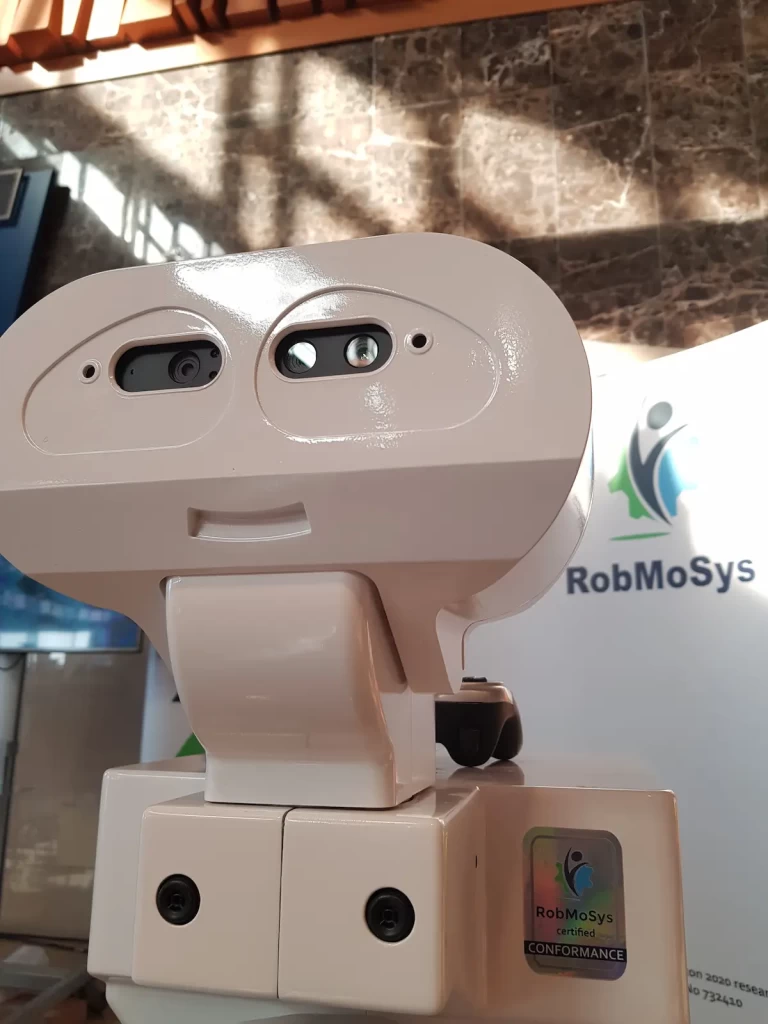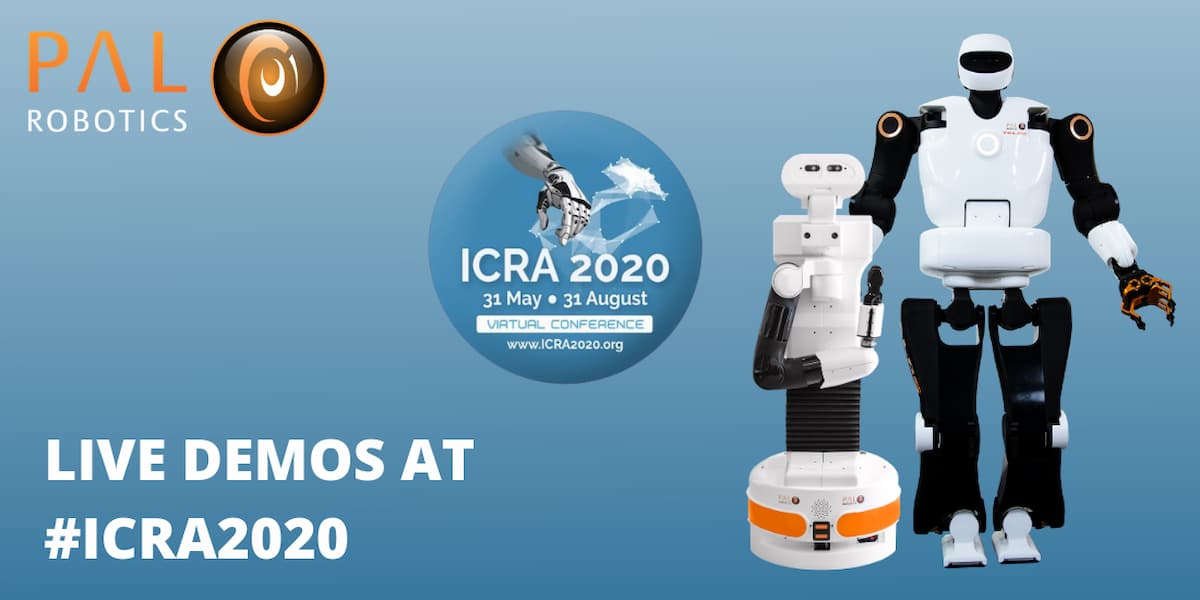What are RobMoSys and Memmo?
It started on 31 May and runs right up until 31 August: ICRA 2020 is happening right now and offers something for everyone in the robotics community, don’t miss out! We are excited to be taking part in ICRA and this week our robots, TALOS and TIAGo, are doing live demos in collaboration with the European Union projects RobMoSys and Memmo that we partner in. Both projects, Memmo and RobMoSys use our robots in their work.
The RobMoSys research project is coordinating efforts to build an open, sustainable, and multi-domain European robotics software ecosystem. The aim of this is to increase quality and scalability of robotics software development, as well as standardize base functionality, such as motion control, navigation and software components. PAL Robotics’ robot TIAGo is used here for pilots in manufacturing and domestic environments.
Memmo (which stands for memory of motion) is a research project which aims to develop memory of motion – a unified approach to motion generation for complex robots with arms and legs. In this project PAL Robotics’ TALOS robot is being used for testing tasks such as electrical drilling and fastening hand-held devices, while climbing a set of stairs in an Airbus experimental production line.
When are the demos?
TIAGo: On the 11th of June, at 1pm (GMT+2), you will be able to attend a live demo (virtually) of our TIAGo Robot in collaboration with project RobMoSys that we are a partner in.

TALOS: On the 12th of June, at 2pm (GMT+2), there will be a live demo of our TALOS robot in partnership with project Memmo that we partner in.
Visit the ICRA website to find out more about the demos and to sign up to attend them virtually.
TALOS and TIAGo robots
TALOS is a humanoid robot that is used in the research of dynamic motion, navigation, and manipulation. Capable of holding up to 6kg in each of its arms, it is designed to be able to hold and operate heavy industrial tools in factories of the future. The dynamic range of motion and advanced trajectory optimization also make it suitable for rescue and space exploration.
Our TIAGo robot is customizable and is, therefore, able to support a wide variety of extensions such as arms or wrists to aid in research for artificial intelligence and human-robot interaction. The robot combines perception, navigation, manipulation & Human-Robot Interaction skills. TIAGo is often implemented in research fields such as factories of the future, smart cities and ambient assisted living.
Some highlights of ICRA 2020 so far
So far with ICRA 2020, we have had live content, plenary talks, virtual workshops, paper discussions, members events, and even an awards ceremony.
The ICRA Awards ceremony took place at the end of last week, which included the RAS Society Awards, the ICRA’20 Conference Awards. Check out our article for our experience at ICRA 2018 in Australia.
This included the RAS Publication Awards – IEEE Robotics and Automation Letters Best Paper Award Honorable Mention. Shunki Itadera, Emmanuel Dean-Leon, Jun Nakanishi, Yasuhisa Hasegawa, and Gordon Cheng were presented with this award for their efforts with the research paper, ‘Predictive Optimization of Assistive Force in Admittance Control-Based Physical Interaction for Robotic Gait Assistance.’ Gordon Cheng, of the Institute for Cognitive Systems, Technical University of Munich, works with our REEM-C robot. You can read the research paper here.
Researcher Jens Kober from Delft University of Technology and partner with us in European Project Open DR participated in the ICRA workshop on Interactive Robot Learning. If you missed this workshop you can find out more about it here.
Make sure you follow us on Twitter to be the first to hear the latest ICRA news. Lastly, we hope to e-see you at our live demos on the 11th and 12th June at ICRA 2020! Visit our events webpage to find out more and don’t forget to check our blog for more news on robotics and technology!
